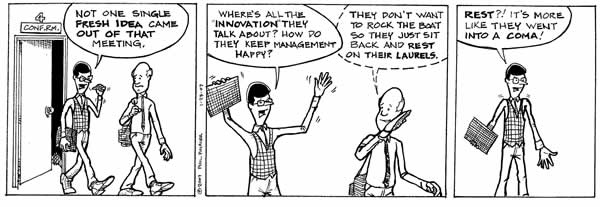I’ve been in “leads” groups before and in all honesty I don’t usually like them. First, many of them meet weekly at 7 a.m. and frankly although I’m usually up at that hour, I prefer not to start my official work day until I’ve showered and had breakfast. And then there is the pressure of providing leads. I understand that’s the concept of the whole organization but in reality a forced lead is usually a bad lead. Leads, a.ka. referrals. need to come from a place of authenticity for it to be a good lead. I need to know you and your business before I will bet my reputation on you by sending a client or prospect.
But in spite of my dislike of leads groups I chose to join the Breakfast Club recently. It’s a great group of local business folks dedicated to helping build each others businesses by providing leads and introductions to each other. I felt confident in joining this group for a few reasons.
- They have a strong “marketing” sphere. This will make it easy for me to collaborate with and provide referrals and introductions to other members of the group.
- They meet at 9 a.m every other week instead of 7 a.m. every week.
- The group itself is awesome! They seem happy, friendly and optimistic. That says alot these days.
This past Tuesday was my second official meeting and I really enjoyed myself. Later in the morning while having my teeth cleaned I had time to contemplate the meeting–who I talked to, who talked to me, who I should talk to, etc. And an interesting and somewhat disturbing thought occurred to me. The only people I approached were young men! I spoke with other people, but they had approached me. OMG they’re going to think I’m a networking cougar! So just in case anyone noticed, I’d like to go on the record and say “I am not a networking cougar”. Next time we meet, I’ll make sure to approach folks of all ages and genders.
 A couple weeks ago, I wrote about designing an effective email marketing campaign on my
A couple weeks ago, I wrote about designing an effective email marketing campaign on my  But today, I came across an email promotion with the opposite but equally annoying problem. It had no click-through’s at all. It was a sales promotion that was offering a deal on signs. I just happen to be in the market for some new signs, so I wandered my mouse around the page looking for the click-through to the website. After all they were offering 50% off! Not a single click-through to the website selling the signs. Obviously this is a major oversight. Without a single click-through, the reader is forced to type the web address into her browser. Not only does it make it less likely that people will actually go to the website being promoted, but the sender of the email loses all tracking capability for his email campaign.
But today, I came across an email promotion with the opposite but equally annoying problem. It had no click-through’s at all. It was a sales promotion that was offering a deal on signs. I just happen to be in the market for some new signs, so I wandered my mouse around the page looking for the click-through to the website. After all they were offering 50% off! Not a single click-through to the website selling the signs. Obviously this is a major oversight. Without a single click-through, the reader is forced to type the web address into her browser. Not only does it make it less likely that people will actually go to the website being promoted, but the sender of the email loses all tracking capability for his email campaign.

 When I read email, I typically have one finger on the delete key. Like most people, I get a lot of e-mail. And like most people, I don’t have time for games. So when designing an email marketing piece I’d advise you to avoid techniques that may slow down the email scanning processes of your readers.
When I read email, I typically have one finger on the delete key. Like most people, I get a lot of e-mail. And like most people, I don’t have time for games. So when designing an email marketing piece I’d advise you to avoid techniques that may slow down the email scanning processes of your readers.